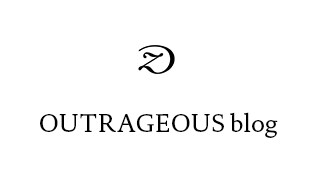 | ||
| Adolf Wöllfi, installation photo by Jann Averwerser 2021 |
To the End of the World and over the Edge – with Adolf Wölfli
at Villa Stuck, Munich
on view until July 25th 2021
« The exhibition “To the End of the World and over the Edge – with Adolf Wölfli” touches on issues of being human: creating worlds and salvation, vision and utopia, abuse and reconciliation, meaning and madness. On more than 25,000 pages, the artist and world-creator Adolf Wölfli (1864–1930) combines drawing, poetry and composition into an inspiring total work of art. A selection of 70 works by Adolf Wölfli from the collection of the Adolf Wölfli Foundation, Kunstmuseum Bern, along with 70 works by other world creators, including Jean Arp, Joseph Beuys, William S. Burroughs, VALIE EXPORT, Anselm Kiefer and Constance Schwartzlin-Berberat, are presented on two floors of Franz von Stuck’s historical artist’s residence. The artists whose works are juxtaposed with those of Wölfli were selected based on their artistic approaches, all of which involve transgressing boundaries.
“To the End of the World and over the Edge – with Adolf Wölfli” is a
project combining exhibition, research and experiment. It aims to
inspire, enchant and unsettle. At the same time, a sociopolitical issue
underlies the project: it criticizes the concept of “outsider art.” To
this day, artists who, like Adolf Wölfli, lived in psychiatric
institutions are described as “outsiders” and their work as “outsider
art.” Adolf Wölfli was an artist and saw himself
as such. Art has the power to reconcile opposites and inspire
changes. It can transcend boundaries, enable self-knowledge and render
categorizations redundant. The current political debate about
“inclusion” and “integration” lacks a fundamental perspective: an
equity-based view of the other. “To the End of the World and over the
Edge – with Adolf Wölfli” conveys the power of art to touch people, to
overcome ingrained ways of thinking, and raises questions about freedom
and equality. There is no “outsider art.”
There is only art!
All artists included in the exhibition transcend social, political or personal boundaries. They combine the seemingly contradictory and, in doing so, release the power to overcome ingrained thought patterns. The experience of ostracism, discrimination, oppression, illness and crime is the starting point for productive boundary transgressions which manifest themselves both in visionary forms and in very real ways that can be translated into life in society.
In his artistic work, Adolf Wölfli translates his own biography, which is closely linked to the experience of poverty, exploitation and abuse of others, into an imaginary, glorious world creation – the “St. Adolf-Giant-Creation.” The exhibition assembles works from all of Adolf Wölfli's creative phases, from the first surviving drawings from 1904 to drawings and collages from the “Funeral March” (1928–1930), Adolf Wölfli’s last, unfinished work comprising more than 8,300 pages.
Among the boundary-crossing artists included in the exhibition is Joseph Beuys.
On view, along with others works by him, is the portfolio he submitted in application
for a professorship at the State Art Academy in Düsseldorf in 1962. As a professor,
Joseph Beuys consistently championed opening up the academy. He
ignored admission restrictions and had around 400 students. Joseph Beuys
viewed the academy as a kind of “world model” – teaching at the academy
was an important part of his “expanded concept of art” and provided a
basis for “social sculpture.”
Equality for women in society has not been achieved to date. VALIE EXPORT is a pioneer and icon of feminist art. The exhibition brings together three large-format works from the “Body Configurations” series she created between 1972 and 1976. In these “body configurations” VALIE EXPORT relates her body to external structures and, in doing so, conveys the tension between the individual and built, urban reality. Social power structures are revealed.
The Museum Villa Stuck is building a dream machine especially for the exhibition “To the End of the World and over the Edge – with Adolf Wölfli.” The “Dreamachine” was developed in the late 1950s by two beatniks, the painter, poet and multi-media artist Brion Gysin and the mathematician Ian Sommerville. The flicker effects of this dream machine can induce a semi-hypnotic or trance-like state. The “Dreamachine” enables visitors to experience a new state of consciousness. In conjunction with the “Dreamachine,” rare works by Brion Gysin as well as works by his beatnik friend William S. Burroughs are featured in the exhibition. »
The exhibition includes: Adolf Wölfli and the Ariana Painter, Jean Arp, Georg Baselitz, Joseph Beuys, Ernst Bollin, Christian Boltanski, Bertolt Brecht, Udo Breger, Oskar Büttikofer, William S. Burroughs, Henning Christiansen, Nezaket Ekici, Erich Engel, VALIE EXPORT, Charles Gatewood, Fritz Getlinger, Brion Gysin, Birgit Jürgenssen, Anselm Kiefer, Johann Lang, Meret Matter, Constance Schwartzlin-Berberat, Ian Sommerville, Franz von Stuck, Johannes Stüttgen, Karl Valentin.
Find out more about the exhibition here: https://www.villastuck.de/ausstellungen/2021/ende/index.htm

